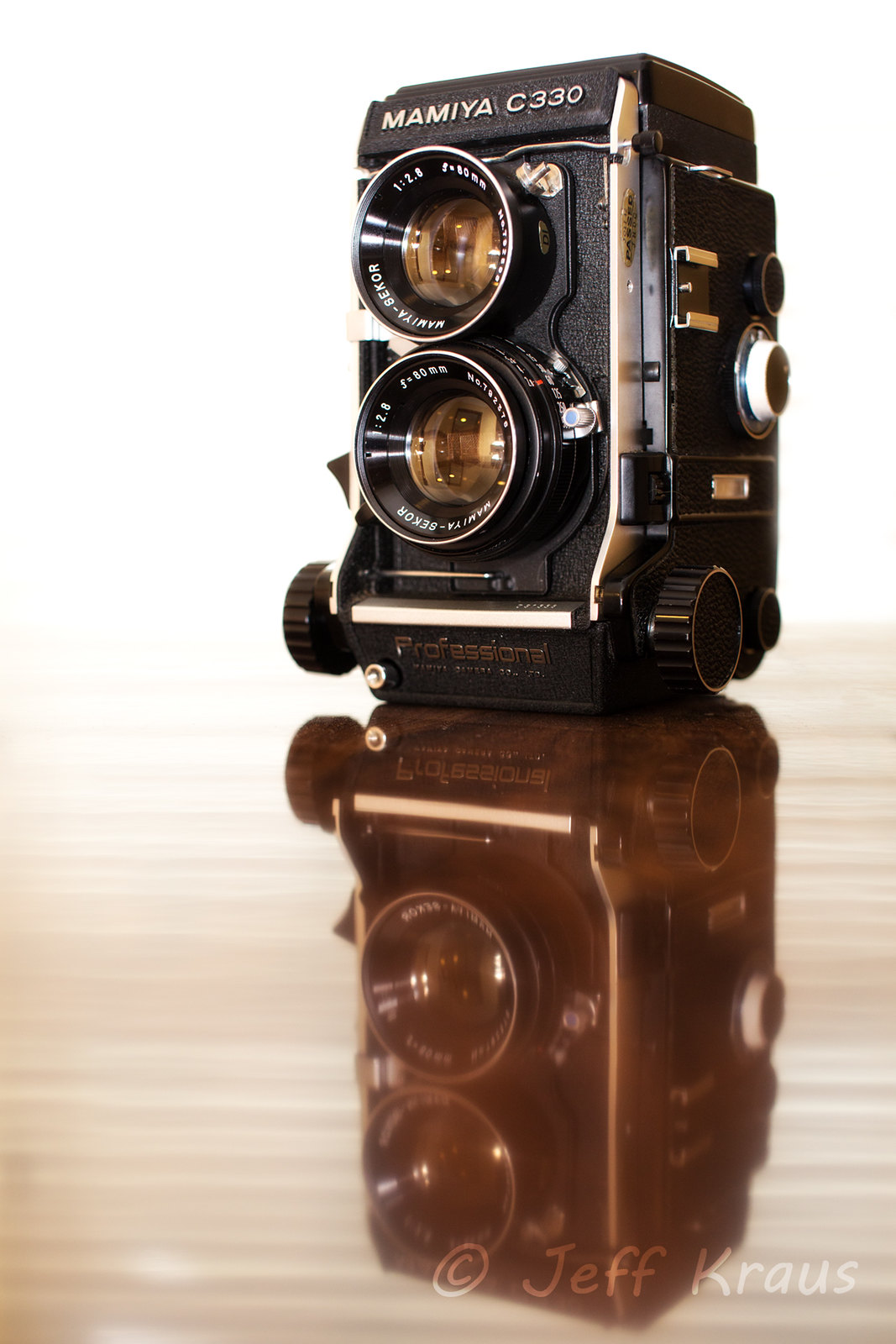
Mamiya C-Series Cameras
The Mamiya C-series TLRs have been around for quite some time, with the original Mamiyaflex C being released in 1956 or 1957. Shortly after that, the line split into two with the C2 and the C3 (the latter being the slightly more advanced model). Subsequent generations continued in this fashion with the C22/C33, and finally C220/C330 and variants (C220f, C330f, C330s).
After the Rolleicord III stole my heart, there was very little chance that it would be my last TLR. The
next focal point for my obsession was the Mamiya C330. After much searching on eBay and Craigslist, I found a near-perfect specimen sporting a Mamiya-Sekor 80mm f/2.8 "Blue Dot" lens pair.
This particular model (with no suffix) was in production from 1969 to 1974. It had several improvements over its predecessor the C33, including support for both 120 and 220 film (by rotating a plate on the film door), and interchangeable focus screens.
What attracted me to the C330 in the first place was primarily the interchangeable lens system, which is pretty unique to TLRs; in fact the Mamiya C-series is one of only three systems with that feature, and with an entry cost ranging from about $150 to about $400 at the high end, it's the only one that doesn't currently cost as much as a decent used car.
So how does it fare in the real world, and do you want to buy one? (Spoiler: awesome, and yes)
Overall Feel
It is a bit bigger (and heavier) than many of the other TLR offerings out there, including the Rolleicord. It's built like an absolute tank, intent on taking any and all abuse thrown at it by professional photographers. Everything about it feels heavy duty, even changing out the lens feels more like changing a tire than handling high end optics. At the same time, if you love cameras like I do, you will love the way this camera looks and feels in your hands. It's just beautiful.
Handholding takes a little getting used to, especially if you're not accustomed to TLRs. I think everyone has their own preference, but I personally "cradle" the camera in both hands along the bottom, which puts both of the shutter release buttons within reach and allows my fingers to naturally rest by the focusing knob. It also helps to mitigate the weight a little bit and improve handheld stability.
Interchangeable Lenses
All of the C-series lens pairs will fit any model. Seven different focal lengths are available (50mm f/4.5, 65mm f/3.5, 80mm f/2.8, 105mm f/3.5, 135mm f/4.5, 180mm f/4.5, 250mm f/4.5) although there are a number of variations within that set popping up over the years, some with improved optics over the previous versions but all retaining their maximum aperture.
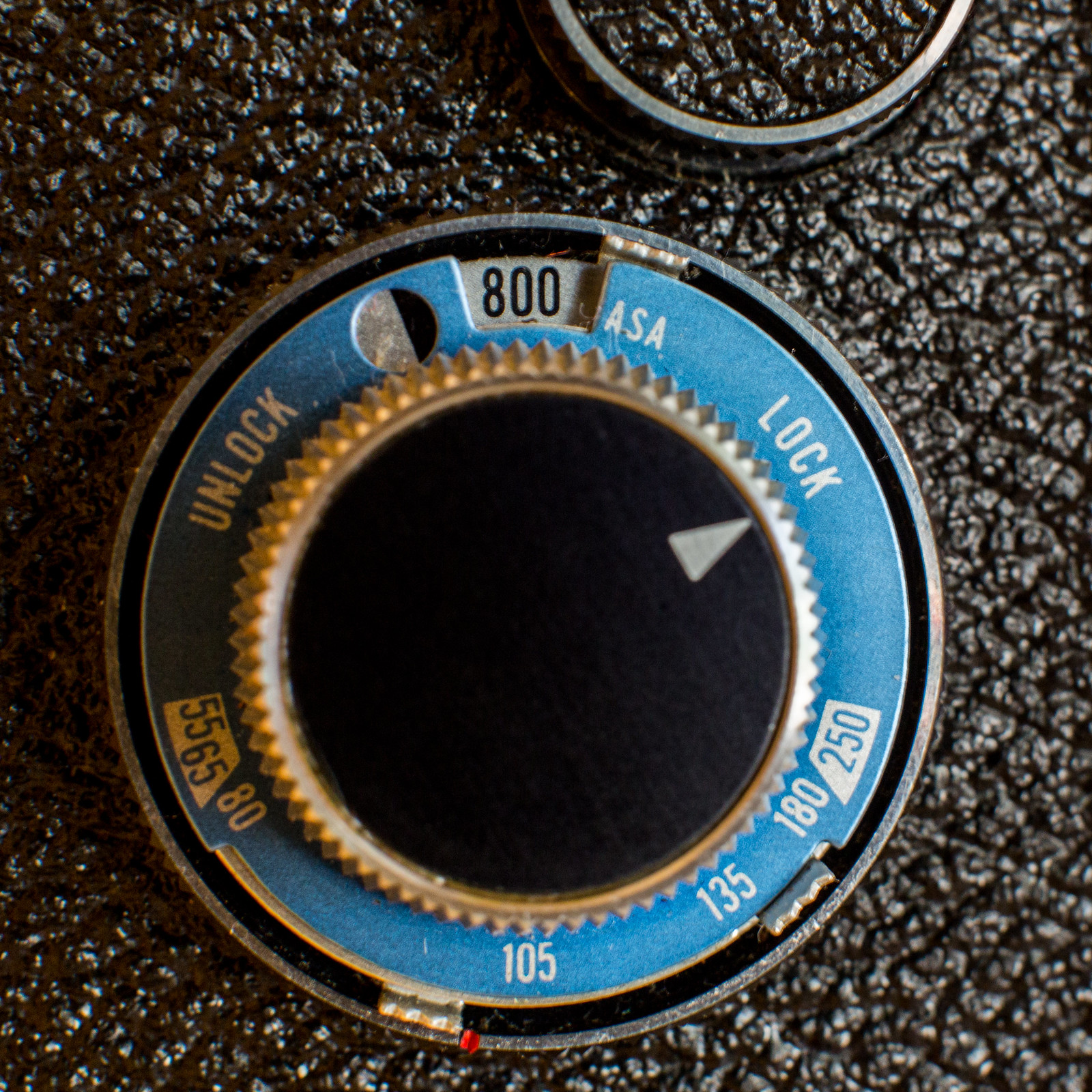 |
| The "everything" dial: Lens change lock, Film speed and film type reminders, and parallax correction dial |
The new lens can then be placed on the camera (taking care to ensure that it's sitting flush and that the shutter cocking lever on the camera is correctly positioned above the one on the lens), the retaining bar returned to its position, and the dial returned to the LOCK position.
It turns out that I actually hardly ever swap out the lenses, opting instead to keep the 80mm f/2.8 on the camera 90% of the time. If I knew then what I do now (namely that I wouldn't change out the lenses nearly as often as I had originally thought), would I have still bought this camera? Probably, yes. I think part of my problem is just that I shouldn't have bought the second lens that I did, the 65mm f/3.5. It's an excellent lens, but it's too close to the 80mm to make that much of a difference -- I could just back up a few steps and get basically the same effect. Okay, maybe not with landscapes. But you get the idea. I probably should have held out for the 55mm.
Focusing System and Parallax
This is one of the other great benefits of the C-series TLRs: the bellows focusing system. As was discussed in a recent post about extension tubes, the more distance you add between the lens and the film plane, the closer you can get to your subject and keep it in focus. The flexible bellows of the C-series allows for an extension that's quite a bit better than other systems, meaning close focus is built in to the body, regardless of the lens you're using (although, much like extension tubes, the effect is far more pronounced on wider lenses than longer ones). The very unscientific test I did just now suggests that the minimum focus distance of the 65mm lens is somewhere around 3 or 4 inches.
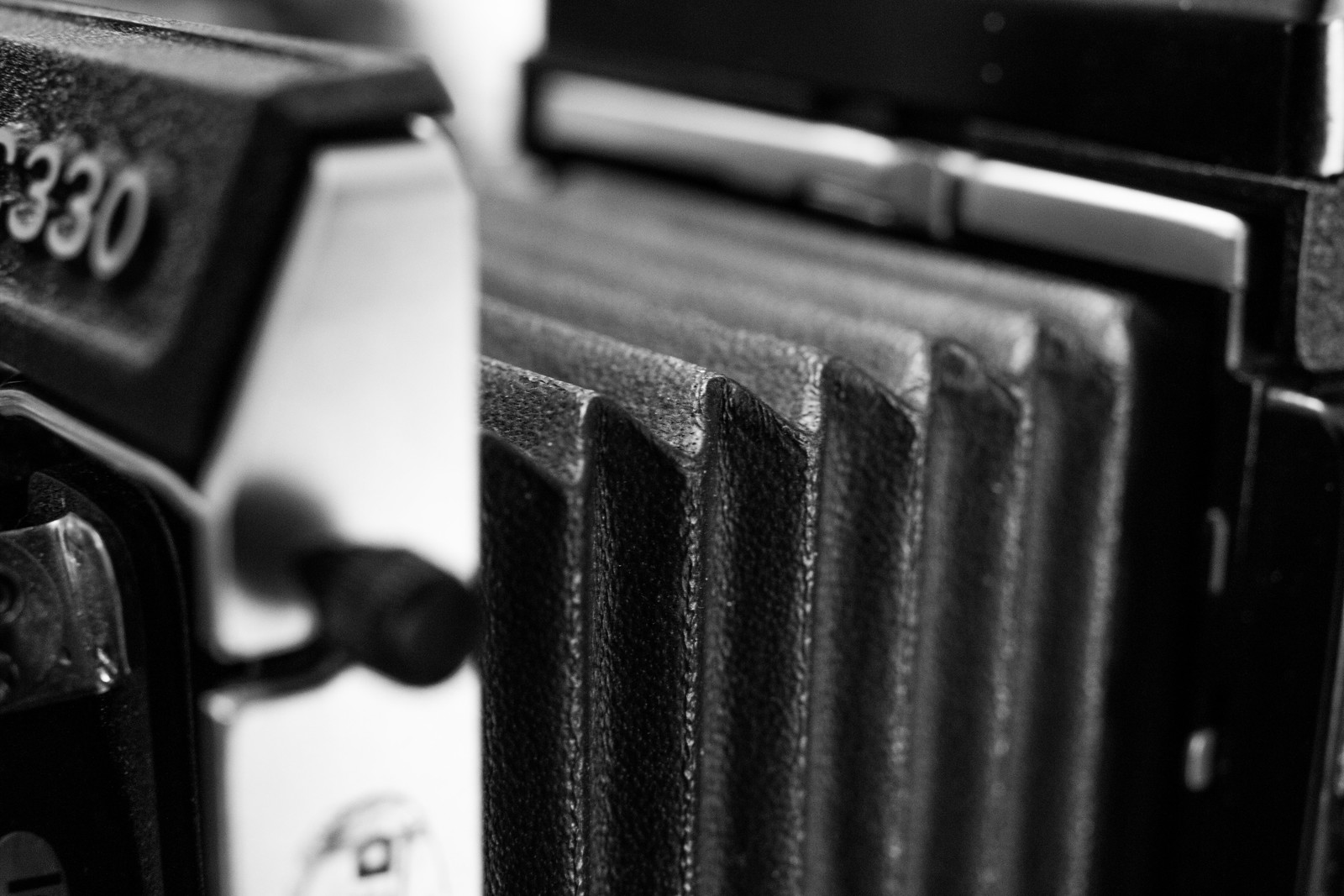 |
| Bellows focusing system allows for unusually close minimum focusing distance |
There are two main drawbacks to having this close focus ability: parallax error and light loss. Parallax error refers to the fact that the viewing lens is sitting on top of the taking lens, so the closer you get to your subject the bigger the difference in what the viewing lens sees versus what the taking lens sees. Light loss is due to the fact that the farther the lens is from the film plane, the darker the projected image is.
Luckily, the C330 has ways to combat this. For parallax error, the best (though least convenient) method is the "Paramender" accessory, which requires a tripod. It's placed between the tripod head and the camera, and after the photo has been dialed in, focused, and set up exactly as desired in the finder, the Paramender is extended, effectively raising the camera along the film plane by the exact distance between the two lenses. This puts the taking lens in the exact place where the viewing lens was when the shot was set up.
The camera itself also has a parallax correction tool, but this is a bit more error prone. There is a
horizontal guide that drops out of the top of the finder, which gets lower in the frame as you focus closer and closer. This guide shows where you should align the top of your frame. It works well as a guide, but if you are shooting handheld or on a tripod at an angle, raising the camera to align the top of your image to the guide could easily knock your subject out of focus. Before doing this, the parallax correction dial (a ring along the outside of the Lock/Unlock lens changing dial) should be set to the focal length of the lens you are currently using.
The same horizontal guide also acts as a needle that points to a series of exposure compensation values along the left side of the finder, ranging from "1.5" to "3". The closer you focus, the farther down the guide moves. Before you take the picture, you look at the number closest to the guide. If it's pointing at "1.5" then you need to increase your exposure by 50% (half a stop). If it's pointing at "2", then you need to double your exposure (increase by one stop), and so on.
Luckily, the C330 has ways to combat this. For parallax error, the best (though least convenient) method is the "Paramender" accessory, which requires a tripod. It's placed between the tripod head and the camera, and after the photo has been dialed in, focused, and set up exactly as desired in the finder, the Paramender is extended, effectively raising the camera along the film plane by the exact distance between the two lenses. This puts the taking lens in the exact place where the viewing lens was when the shot was set up.
The camera itself also has a parallax correction tool, but this is a bit more error prone. There is a
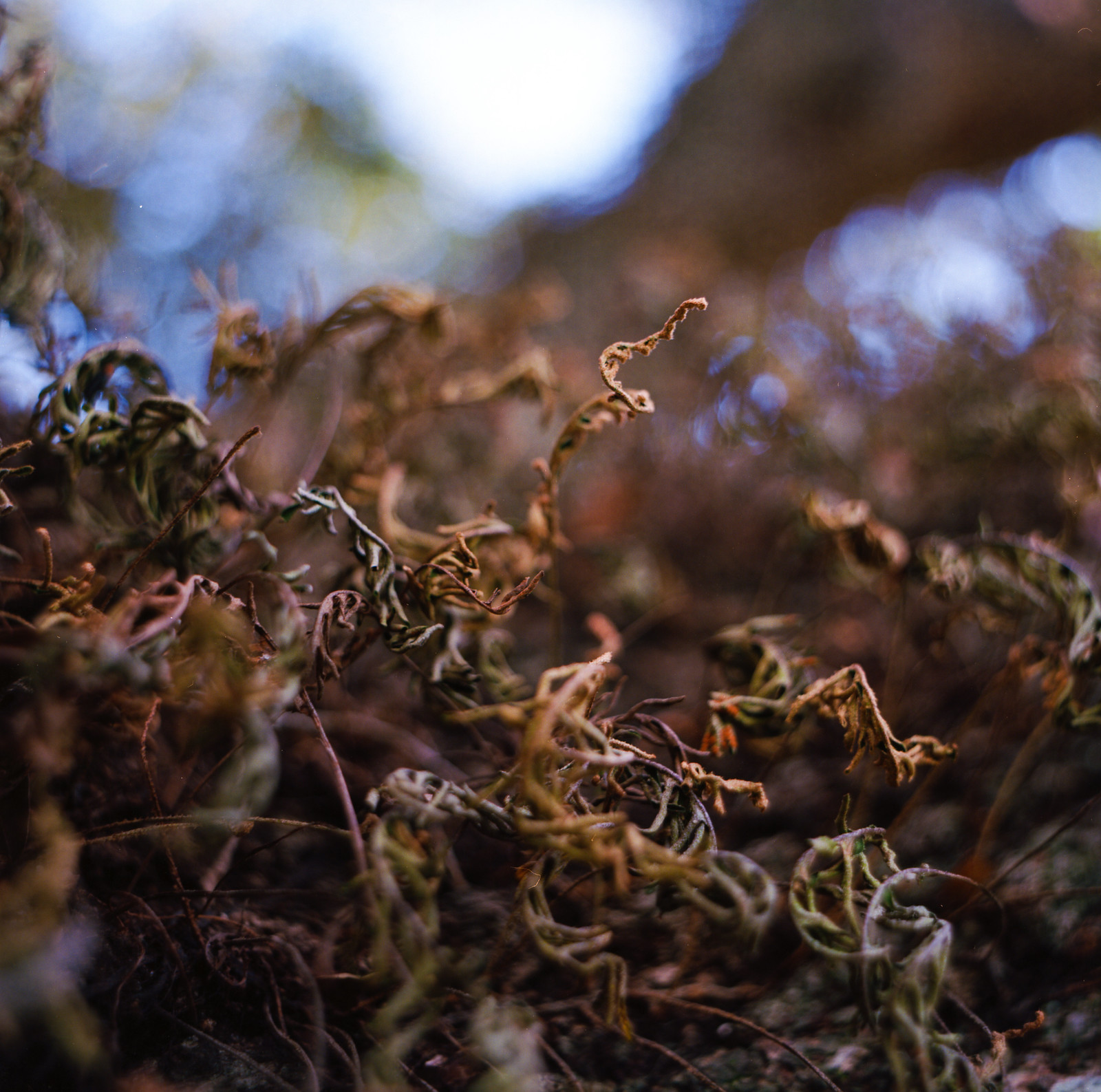 |
| Moss growing on a tree branch, shot using the close focusing capability of the C330. You can also see this image on Flickr. |
The same horizontal guide also acts as a needle that points to a series of exposure compensation values along the left side of the finder, ranging from "1.5" to "3". The closer you focus, the farther down the guide moves. Before you take the picture, you look at the number closest to the guide. If it's pointing at "1.5" then you need to increase your exposure by 50% (half a stop). If it's pointing at "2", then you need to double your exposure (increase by one stop), and so on.
The C330 has interchangeable focus screens. However, I've only used the one that came with mine, which is the 4° split image rangefinder. If the C330 is anything like the RZ67, it came with a plain matte screen, which is exactly the same as the split image rangefinder screen just without the center spot. Daylight focusing with the plain matte screen is pretty easy to achieve since it really "pops" noticeably into focus, but in lower light conditions a split image rangefinder is pretty hard to beat.
 |
| Waist-level viewfinder with split-prism rangefinder in the center and the close-focusing exposure compensation values visible on the left. |
You can also frame your subject using the "sports finder", built in to the finder hood. By folding down the center of the front piece, you open up a window that approximates the view of the 80mm lens (a further adjustment allows for the 65mm field of view). You then looks through a smaller hole at the back of the finder hood, looking forward through the larger opening. This allows you to frame your subject without the finder screen. However, it provides no method of focusing, so I can imagine that this is only really useful when shooting at small apertures with sufficient distance to put the subject in the hyperfocal range.
Automatic Exposure
Nope. Bring a light meter, or go with sunny/16. I have a free phone app that does a reasonable approximation of a reflective light meter in the few tests I've done comparing it to the spot meter in a Sekonic L-508, so that might be an option if nothing else is available.
Shutters
The C330 doesn't have its own shutter. The fully mechanical shutters are located in the lenses themselves, and from what I've seen they consistently offer shutter speeds ranging from 1/500 sec. up to 1 sec., plus bulb. There are two shutter release buttons, one lever that can be press down and a button on the bottom that can be pressed. The button has threads for a standard plunger-style remote release cable. There is a lock slider that will keep the shutter releases from being pressed inadvertently.
There are two flash sync modes that allow for flash sync across the full range of shutter speeds. Personally, I haven't yet used this camera with a flash so I haven't had a need for these.
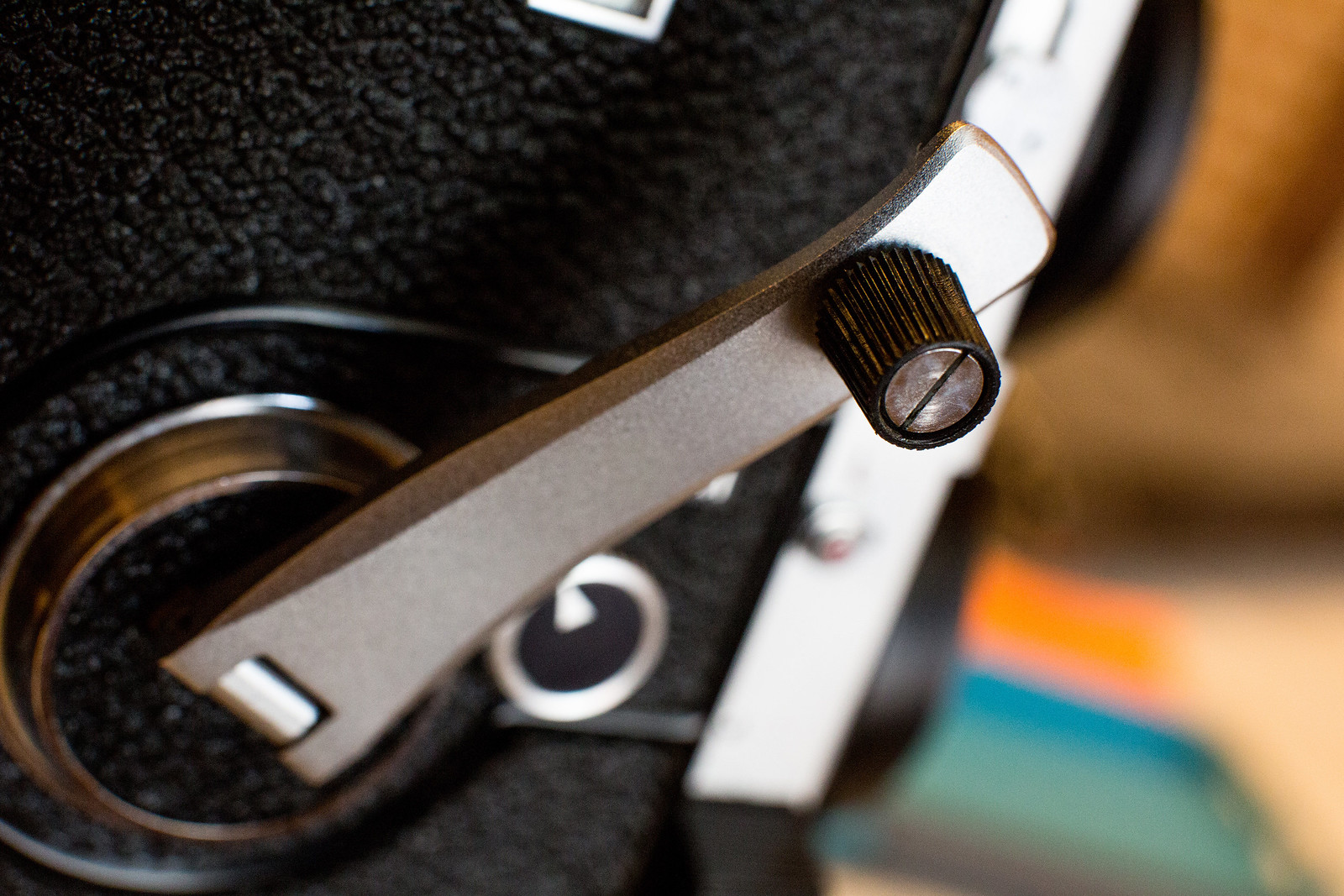 Film Advance
Film Advance
The C330 has a crank advance, with each frame requiring a 360° crank. This is one of the differences between the C330 and the C220, which uses a knob advance. Additionally, the C220 requires the user to manually cock the shutter by pressing down on the lever on the lens in between each shot. The C330 does this automatically when the user winds the crank. A dial adjacent to the crank allows the user to set single or multiple exposure modes. In single exposure mode, the camera will lock out the shutter controls after firing, until the crank is advanced to the next frame. In the multiple exposure mode, there is no lockout. The shutter can be fired at will, without advancing the film.
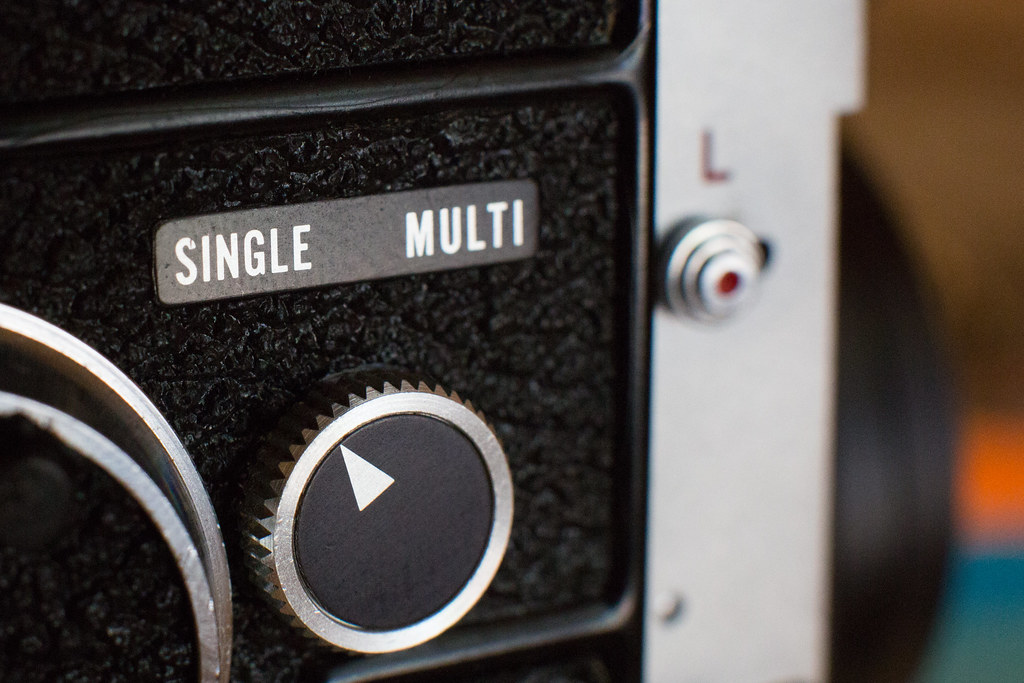 The C330 In Use
The C330 In Use
So finally we get to the really important part: the C330 in use. Personally, I do very little in the way of portraits at this point, so most of my photos with the C330 are landscapes or (most often) random things of mild interest.
The C330, or some would say TLRs in general, really make you slow down and think a bit before taking a picture. The spray & pray digital "technique" doesn't work here. And I can tell you, if you've gotten into that rut like I once did, nothing will improve your photography more than forcing yourself to be more selective and start thinking hard about your subject, your surroundings, your light, etc. After all, between film cost and development cost (assuming you're not developing your own) you're probably looking at about $1 per frame, maybe more.
Outdoors (or indoors with great light), the waist-level finder will do a fine job of showing you when your subject is in focus. Care should still be taken, especially at wider apertures, because minute changes can throw off the focus by just enough to annoy you to no end.
Camera shake is another issue, and personally I've found it difficult to handhold at speeds below about 1/60 sec. Even then I need to brace carefully and hold my breath.
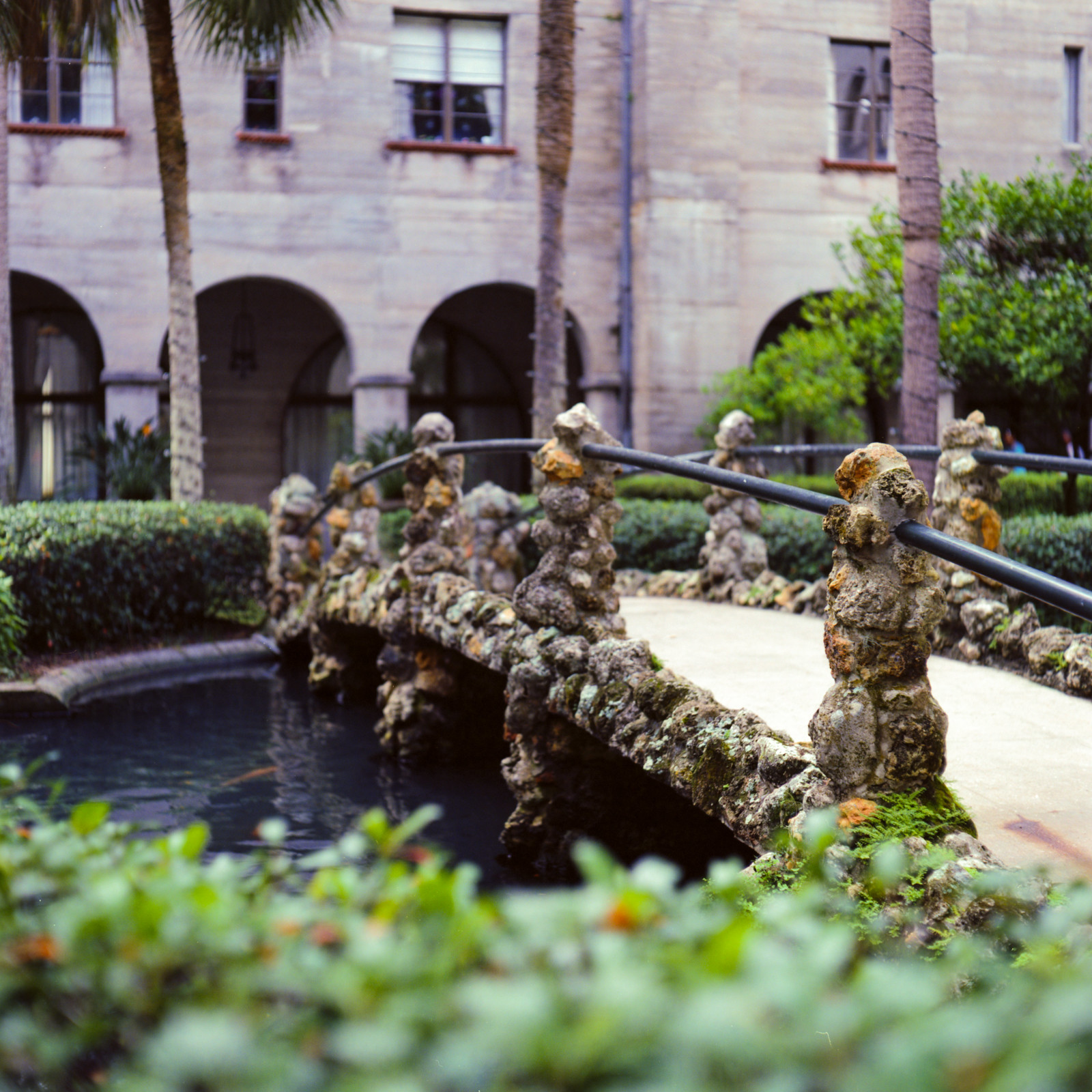 |
| (View on Flickr) |
The weight isn't all that noticeable for me in day-to-day usage, largely because I'm already accustomed to carrying a fully equipped Canon 5D Mark III, with battery pack and two batteries and a good sized L lens, with me wherever I go. If you're used to walking around with a Rollei 35 or similar compact camera with you, or even a smaller SLR/DSLR, you may find it bulky at first. You'll get used to it though.
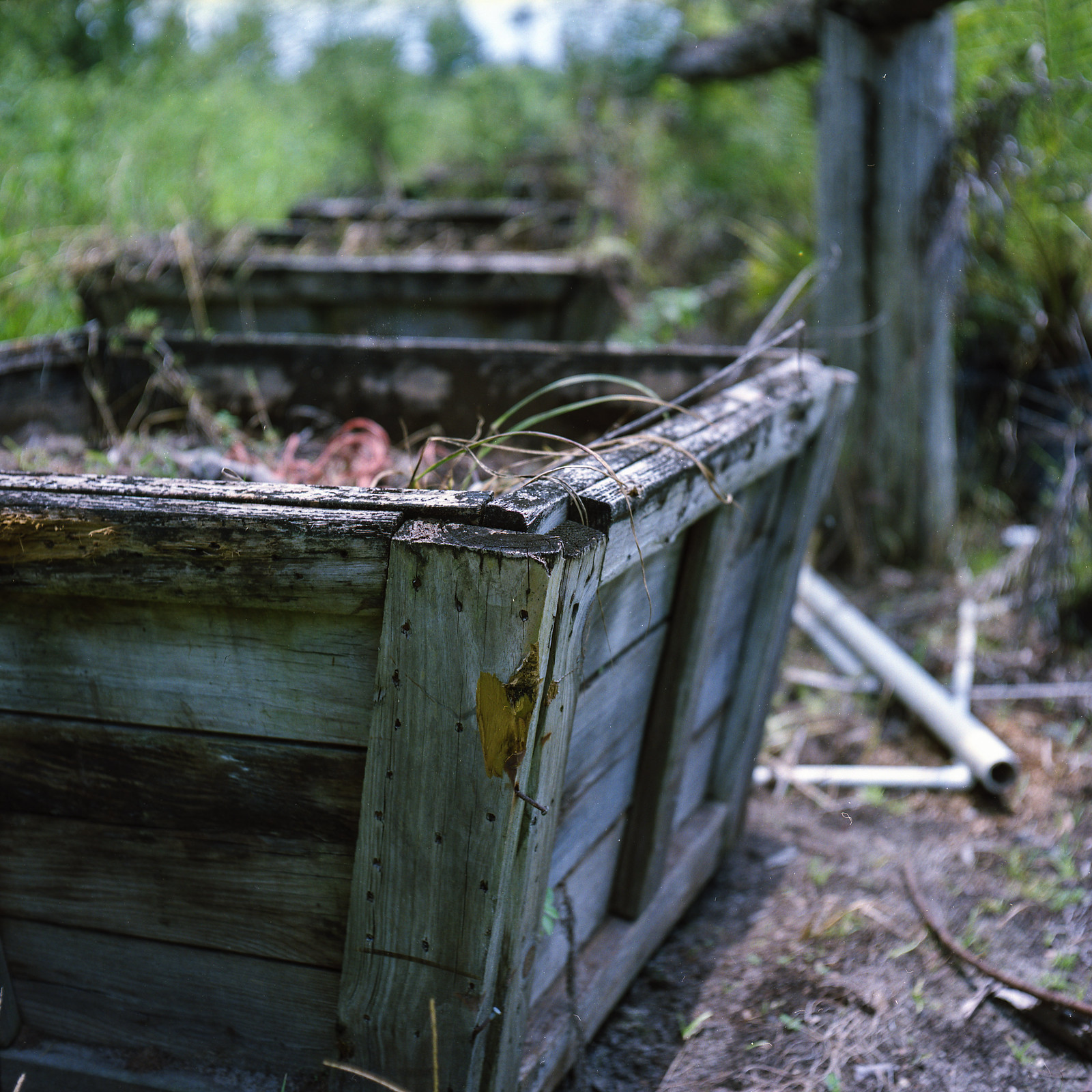 |
| (View on Flickr) |
Both of my lenses, particularly the 80mm, operate a bit too slow with the slowest shutter speeds. A 1-second exposure actually runs about half a stop slow. The problem is basically nonexistent by around 1/5, and at any rate I will be having them adjusted when I bring in the camera for a CLA in the near future.
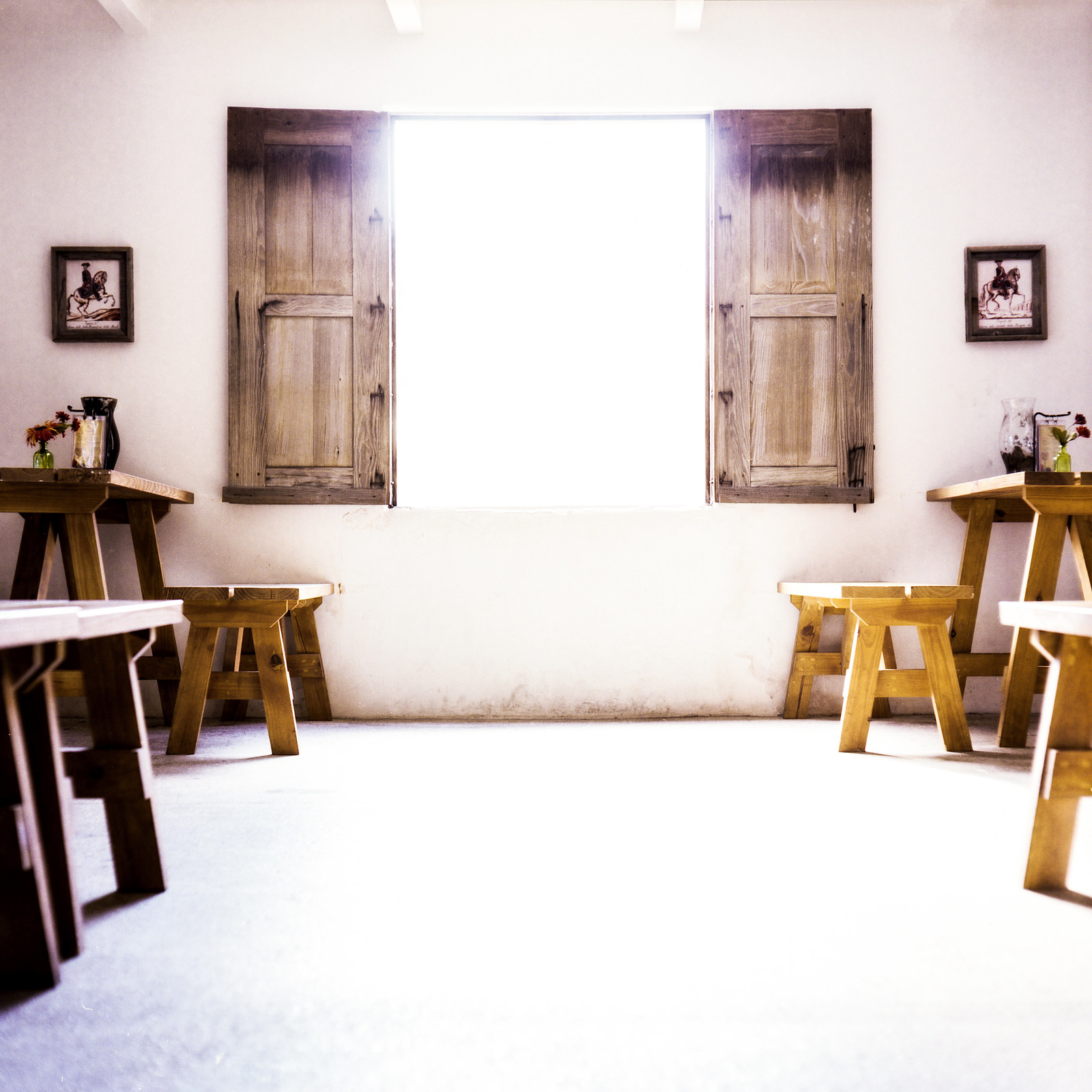 |
| (View on Flickr) |
Happily, Mamiya makes the instruction manuals for all of their old cameras available online in PDF for, so if you're interested in buying one, I'd recommend doing what I did and download the Mamiya C330 Instruction Manual and give it a good once over so you know what you're getting.
And then get one, because you'll absolutely love it!
Questions? Corrections? Feel free to post a comment below!
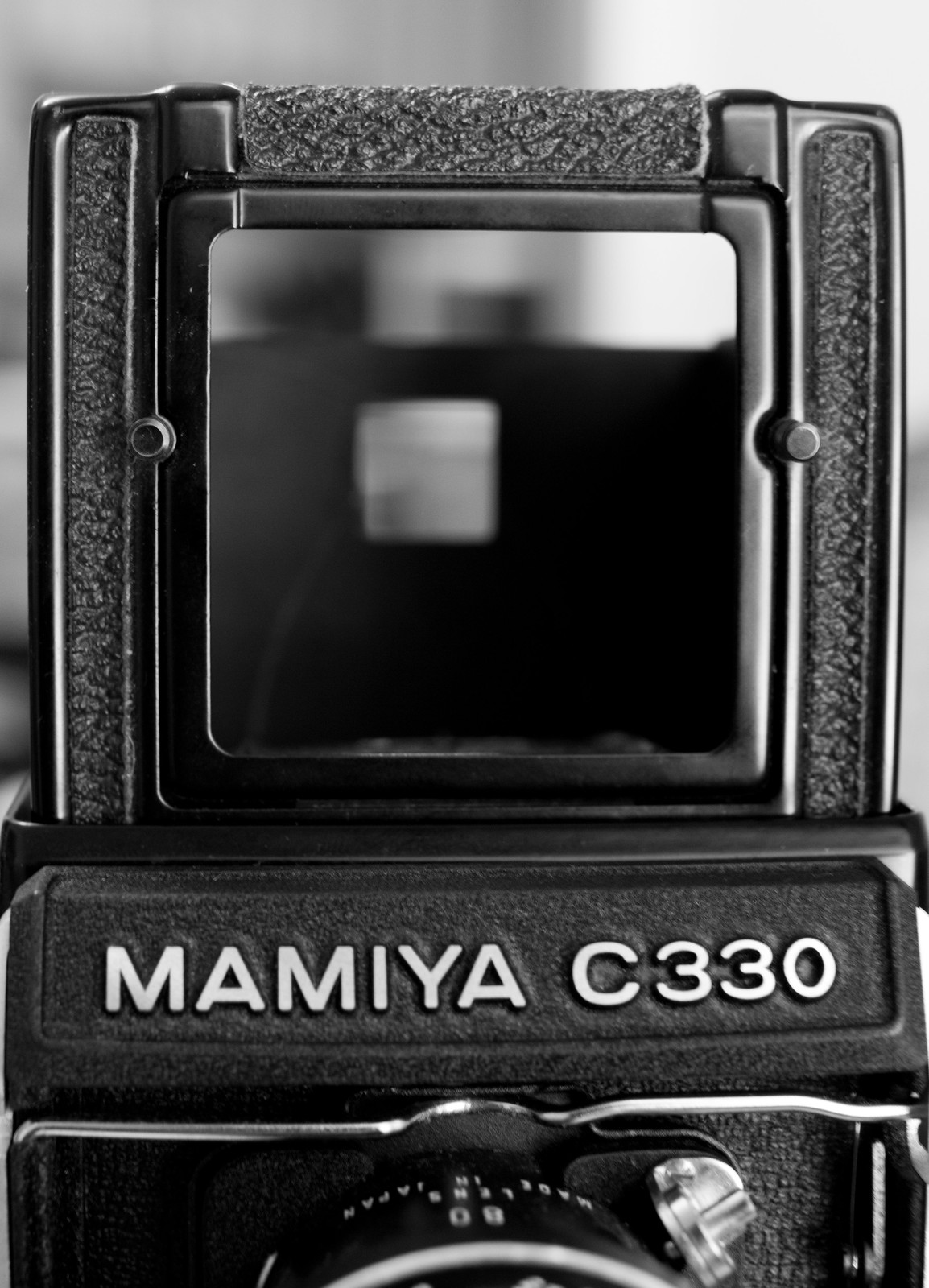
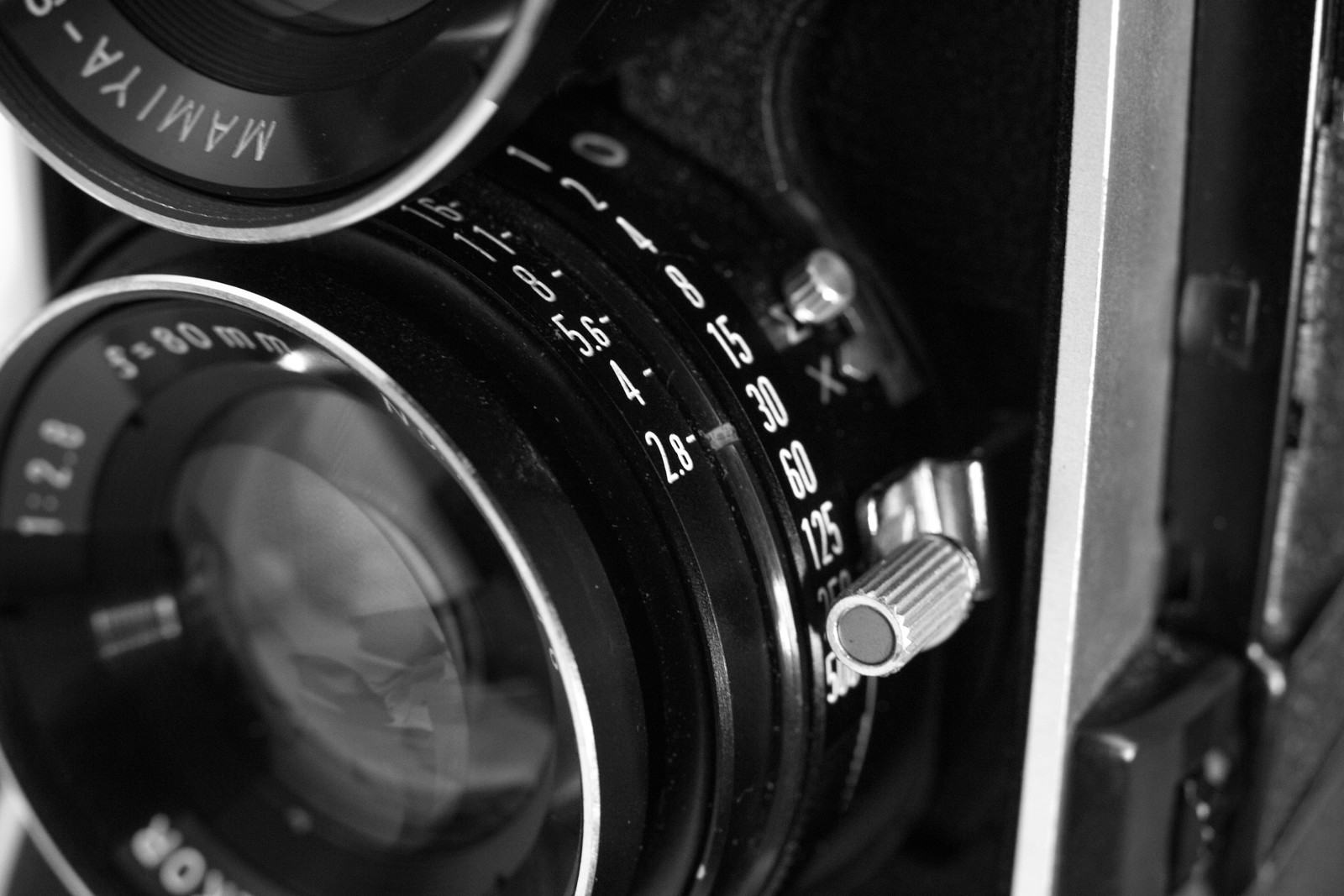
No comments:
Post a Comment